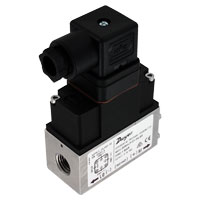Select Key Pressure Measurements and Their Importance
Select Key Pressure Measurements and Their Importance
We have previously written about the different types of pressure and how each type is referenced. This post discussed atmospheric (barometric), absolute, gage, vacuum, differential, and hydrostatic pressure. For a refresher on these pressure types, click here. This article will expand on the previous post by listing some more key pressure measurements and explaining their importance.

When considering a pressure transmitter, it is important to understand the different pressure range limits of your system. First, the amount of pressure a transmitter can withstand depends on whether or not the system is active.
Static pressure is “the pressure of a fluid at rest,”[1] so maximum static pressure is the highest pressure that a resting system can withstand.
Dynamic pressure is the “result of the velocity of the fluid inside the pipe.”[2]
The operating or working pressure is “the highest amount of pressure under which a piece of equipment can be safely operated.” [3] Operating pressure is sometimes known as MAWP, or maximum allowable working pressure.
Overpressure occurs when the maximum operating pressure of a system is exceeded and is frequently overestimated when designing systems.[4]
Burst pressure can easily be confused with overpressure, but there is an important difference between the two. Overpressure is the highest pressure at which a unit can be operated. Burst pressure is “the theoretical internal pressure exerted on well casing walls, casing joints, pipelines and pipe joints, or any other pressure equipment that can fail due to high internal pressure.” [5] Simply, burst pressure is the amount of pressure that can be applied without physically damaging the unit. From a control perspective, it is important to know the burst pressure of a unit or system in order to plan if a system fails. As system pressure rises, “the probability of a leak or a rupture increases, although the specific failure point is dependent on system design and maintenance.” [6]
The Dwyer Differential Pressure Transmitter, Series 629HLP, was designed to withstand water static pressure up to 365 psi (25 bar) while still measuring differential pressure of less than 1 psi within 1% accuracy. It is truly a rugged, versatile, high accuracy device that provides excellent response time and reliable static or dynamic measurements. The 629HLP is available in 4 differential ranges: 0 to 14.5 psi (1 bar), 0 to 36 psi (2.5 bar), 0 to 58 psi (4 bar), and 0 to 87 psi (6 bar).

